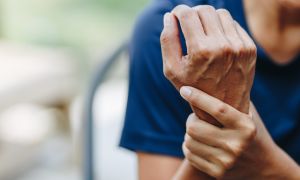Advertisement
The probable reasons that your feet are turning out is due to both tight and weak muscles. So, it is important to stretch the tight ones and strengthen the weak ones.
Probable tight muscles: calfs, bicep femoris (one of the three hamstrings), and the TFL (tensor fascia latae). Calf, hamstring, and standing TFL foam rolling and stretching exercises should help.
Probable weak/underactive muscles: inner thighs, gluteus medius and gluteus maximus. Some examples of beneficial strengthening exercises include butt bridges squeezing a small ball between knees, tube walking, and single leg balance and reach.
Probable tight muscles: calfs, bicep femoris (one of the three hamstrings), and the TFL (tensor fascia latae). Calf, hamstring, and standing TFL foam rolling and stretching exercises should help.
Probable weak/underactive muscles: inner thighs, gluteus medius and gluteus maximus. Some examples of beneficial strengthening exercises include butt bridges squeezing a small ball between knees, tube walking, and single leg balance and reach.
This is most likely caused by tight calf muscles and weak inner thighs. Start by performing a few calf and outer thigh stretches, then perform strengthening exercises for your inner thighs, side-lying leg lifts and/or squeezing a soft ball between your knees. Exercises that require you to balance on one leg while reaching in different directions with the other will also help.
Continue Learning about Joint Health
Important: This content reflects information from various individuals and organizations and may offer alternative or opposing points of view. It should not be used for medical advice, diagnosis or treatment. As always, you should consult with your healthcare provider about your specific health needs.








